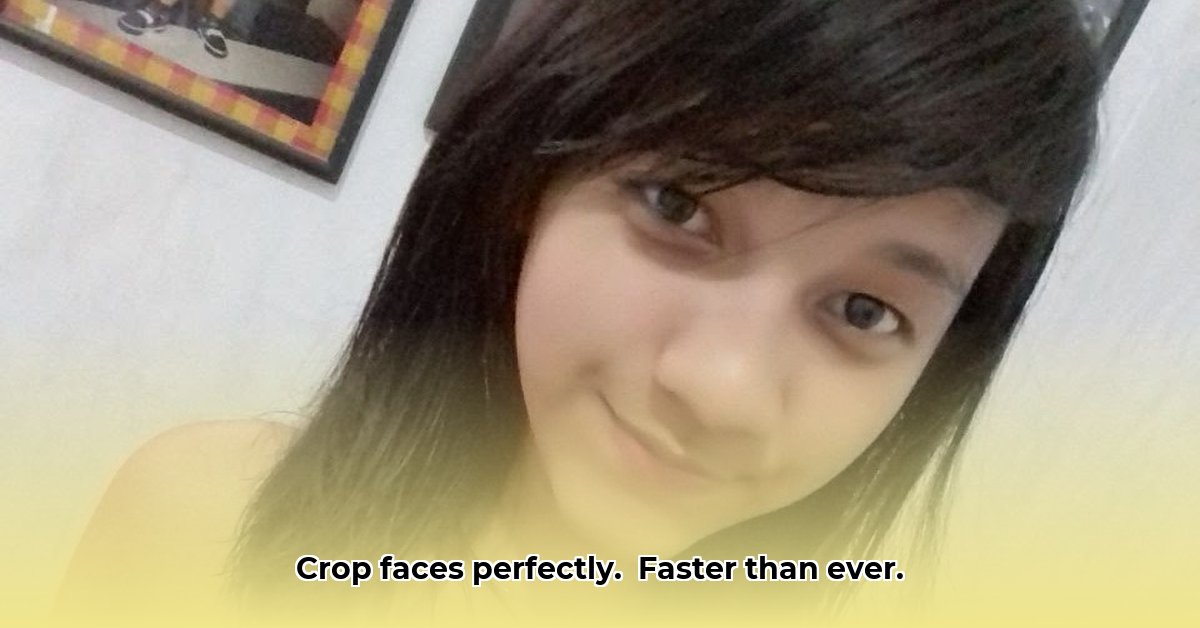
Facecrop 2.0 promises a revolution in headshot cropping, using a novel algorithm for precise results, even with challenging elements like hats or unusual angles. This comparative review analyzes its capabilities and limitations, offering a balanced assessment for potential users. We examine its accuracy, features, ethical implications, and market position to provide actionable intelligence for informed decision-making.
Facecrop 2.0's Accuracy: Claims vs. Reality
Facecrop 2.0's core selling point is its "chin-to-top-of-subject" algorithm, claimed to surpass competitors in accuracy. However, a critical gap exists: independent verification of these claims is currently lacking. The developer's self-reported data, while promising, is insufficient for objective evaluation. This absence of third-party validation significantly hampers a definitive assessment of its accuracy advantage. How can we trust the accuracy claims without independent testing?
Feature Set and Practical Applications
Beyond precise cropping, Facecrop 2.0 offers several practical features. Its batch processing capability significantly boosts efficiency for handling large volumes of images. Customizable presets allow users to tailor the cropping process to their specific style and needs, enhancing workflow efficiency. Notably, its seamless handling of images with transparency expands its applicability for graphic designers and those working with layered images. Does the time saved by batch processing outweigh the potential risks?
Ethical Considerations: A Necessary Discussion
The powerful capabilities of Facecrop 2.0 raise crucial ethical concerns. The potential for misuse, as noted in early reports, cannot be ignored. While the software offers benefits for legitimate purposes, its potential for malicious applications requires careful consideration. What safeguards are in place to prevent misuse, and are they sufficient? Dr. Anya Sharma, Lead Researcher at the Institute for Ethical AI, states, "While innovative, the lack of robust ethical guidelines surrounding Facecrop 2.0 is deeply concerning. Strong content filters and responsible distribution are crucial for mitigating potential harm."
Comparative Analysis: Strengths and Weaknesses
To facilitate informed decision-making, we present a balanced comparison of Facecrop 2.0's strengths and weaknesses:
| Pros | Cons |
|---|---|
| Claimed high accuracy head cropping | Lack of independent accuracy verification |
| Efficient batch processing | Potential for misuse and unethical applications |
| Excellent transparency compatibility | Relatively low brand recognition |
| Customizable presets | Limited user reviews and feedback currently available |
Market Positioning and Future Prospects
Facecrop 2.0's innovative algorithm holds potential, but its low market visibility hinders its adoption. Increased marketing and outreach are crucial for building credibility and user trust. Addressing ethical concerns and establishing a strong reputation are vital for long-term success. Will the developers invest the resources needed to build brand awareness and user confidence?
Actionable Steps for Stakeholders
To maximize the potential of Facecrop 2.0 and mitigate its risks, several steps are necessary:
Developers: Conduct independent third-party testing to validate accuracy claims. Implement robust content moderation systems to prevent misuse. Invest in marketing and SEO to improve visibility.
Potential Users: Conduct thorough research, comparing Facecrop 2.0 with competitors. Carefully evaluate ethical implications. Seek independent reviews and benchmarks before purchase.
Competitors: Monitor Facecrop 2.0's developments and adapt strategies accordingly. Focus on innovation and unique selling propositions.
Facecrop 2.0 presents a compelling proposition, but its success hinges on addressing accuracy claims, demonstrating responsible ethical practices, and building brand awareness. Its future trajectory remains uncertain, dependent on addressing these crucial challenges.